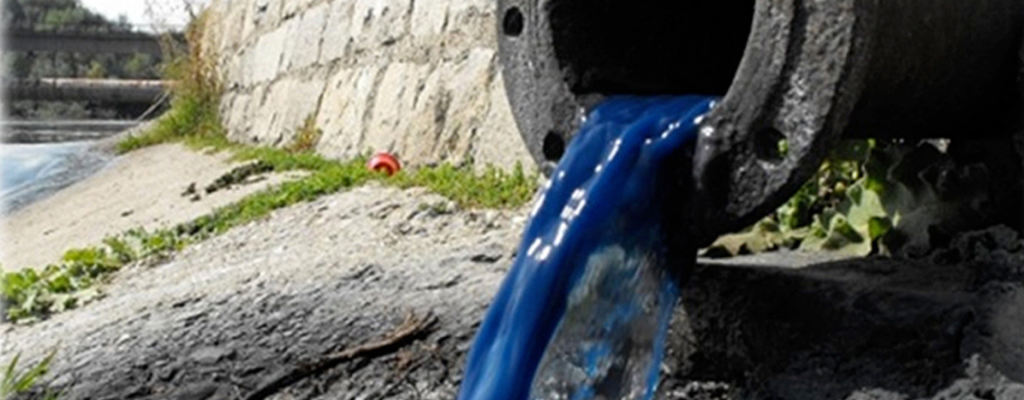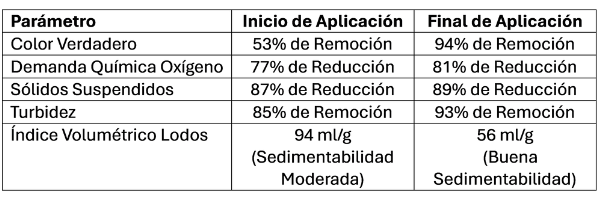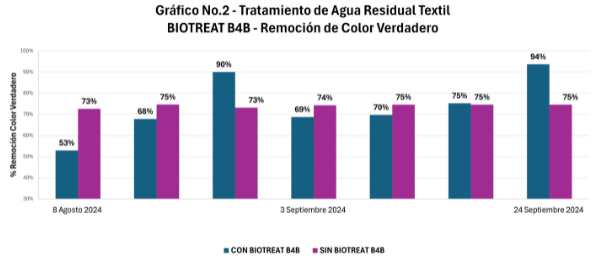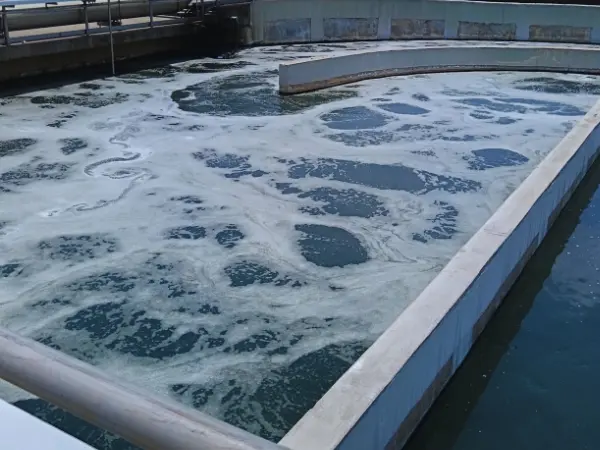
CASE STUDY
Water Waste Treatment to Reduce Color with BIOTREAT B4B
Wastewater from the textile industry is typically treated through biological and physicochemical processes. Among the biological processes, biological sludge treatment and stabilization ponds stand out. In this study, BIOTREAT B4B was applied over 50 days in an aerobic biological sludge system at a plant that processes 15,000 m³ of water per day.
TEST: BIOTREAT B4B, a blend of facultative Bacillus-based strains, was applied for over a month to validate its ability to reduce color in textile effluent.

APPLICATION:
BIOTREAT B4B was dosed directly into a biological reactor with a capacity of 7,500 m³/day and compared to a second reactor that received no treatment. Water samples were taken at the inlet (Equalization Tank) and outlet (Clarifier Tank) of the biological reactor. The study was conducted from early August to late September 2024.
RESULTS
Treatment with BIOTREAT B4B resulted in excellent true color reduction in the effluent, increasing the color removal rate from an initial 53% to 94% by the end of the period, as shown in Graph No. 1. This graph also illustrates the trend in color reduction throughout the application period.
The Honduran national regulation for discharges into receiving bodies sets a true color limit of 200 PtCo. From day 40 of BIOTREAT B4B application, the effluent began being discharged below the Maximum Permissible Value.



For comparison purposes: Graph No. 2 shows the performance of the reactor treated with BIOTREAT B4B versus a reactor without Bacillus treatment.
RESULTS
Continuous treatment with BIOTREAT B4B is recommended to maintain optimal levels of color removal and other parameters.



Image No. 1 – WITHOUT vs. WITH BIOTREAT B4B
Appearance of the biological sludge after 50 days of BIOTREAT B4B application.
A more compact sludge is observed, with larger, better-formed flocs.

Image No. 2 – Start vs. End of BIOTREAT B4B Application
Appearance of the clarified effluent after 50 days of BIOTREAT B4B application.
A more effective clarification is observed, with fewer color units and more compact sludge.
WANT TO LEARN MORE?
Our team, equipped with extensive expertise and a passion for problem-solving, is on standby to help you through any inquiries
